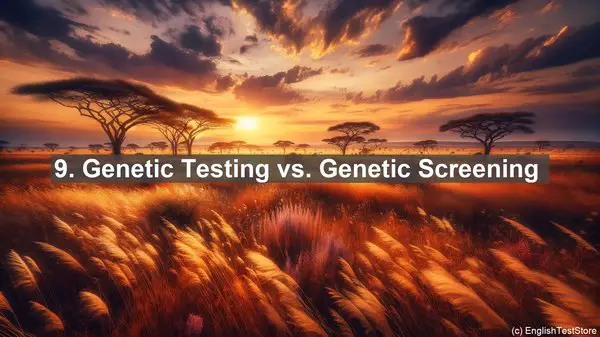Introduction
Today, we’re diving into the fascinating world of bioethics. As we explore this field, we often encounter words that may seem similar but have distinct meanings. In this lesson, we’ll unravel the top 10 commonly confused words in bioethics, ensuring you have a solid grasp on their definitions. Let’s get started!
1. Ethics vs. Morals
While these terms are often used interchangeably, they have subtle differences. Ethics refers to a set of principles or guidelines that govern a profession or group, such as the medical community. Morals, on the other hand, are personal beliefs about what is right or wrong. In bioethics, we consider both the ethical standards of the field and the individual’s moral values.
2. Euthanasia vs. Assisted Suicide
Though both involve the intentional ending of a person’s life, there’s a key distinction. Euthanasia is when a medical professional administers a lethal dose to a patient, usually to relieve suffering. Assisted suicide, however, is when a person self-administers the lethal dose, often with guidance from a healthcare provider. The difference lies in who ultimately performs the act.
3. Beneficence vs. Non-maleficence
These principles guide healthcare professionals. Beneficence refers to the duty to act in the best interest of the patient, promoting their well-being. Non-maleficence, on the other hand, is the principle of ‘do no harm.’ While both are crucial, there may be instances where they come into conflict, requiring careful consideration.

4. Autonomy vs. Paternalism
Autonomy emphasizes a patient’s right to make decisions about their own healthcare, based on their values and preferences. Paternalism, however, occurs when a healthcare provider makes decisions on behalf of the patient, often with the belief that it’s in their best interest. Balancing these two can be challenging, as respecting autonomy is a cornerstone of bioethics.

5. Informed Consent vs. Assent
Informed consent is a crucial aspect of medical practice. It involves providing the patient with all relevant information about a procedure or treatment, including potential risks and benefits, so they can make an informed decision. Assent, on the other hand, is when a minor, who may not have the legal capacity to provide consent, expresses agreement or disagreement with a proposed course of action.
6. Confidentiality vs. Privacy
While related, these terms have distinct meanings. Confidentiality refers to the duty to keep information shared by a patient confidential, only disclosing it to those who have a legitimate need to know. Privacy, on the other hand, encompasses a broader concept, including the patient’s right to control access to their personal information.
7. Justice vs. Equity
In the context of bioethics, justice refers to the fair distribution of resources, treatments, and opportunities. Equity, however, goes a step further, aiming to address and rectify existing inequalities. While justice ensures fairness, equity strives for fairness with a focus on leveling the playing field.
8. Stem Cells vs. Embryonic Stem Cells
Stem cells are undifferentiated cells with the potential to develop into various cell types. While all stem cells have this ability, embryonic stem cells are derived from embryos and have the highest developmental potential. This distinction is significant, as it impacts the ethical considerations surrounding their use in research and therapy.
9. Genetic Testing vs. Genetic Screening
Both involve examining an individual’s genetic makeup, but the purposes differ. Genetic testing is often done when there’s a specific concern, such as a family history of a genetic condition. Genetic screening, on the other hand, is a broader assessment done on a population or group, aiming to identify potential genetic risks.
10. Quality of Life vs. Sanctity of Life
These concepts often arise in discussions about end-of-life care. Quality of life refers to the overall well-being and enjoyment a person experiences. Sanctity of life, however, emphasizes the inherent value and sacredness of life, regardless of its quality. Balancing these considerations is a complex task, requiring careful thought and ethical reflection.
